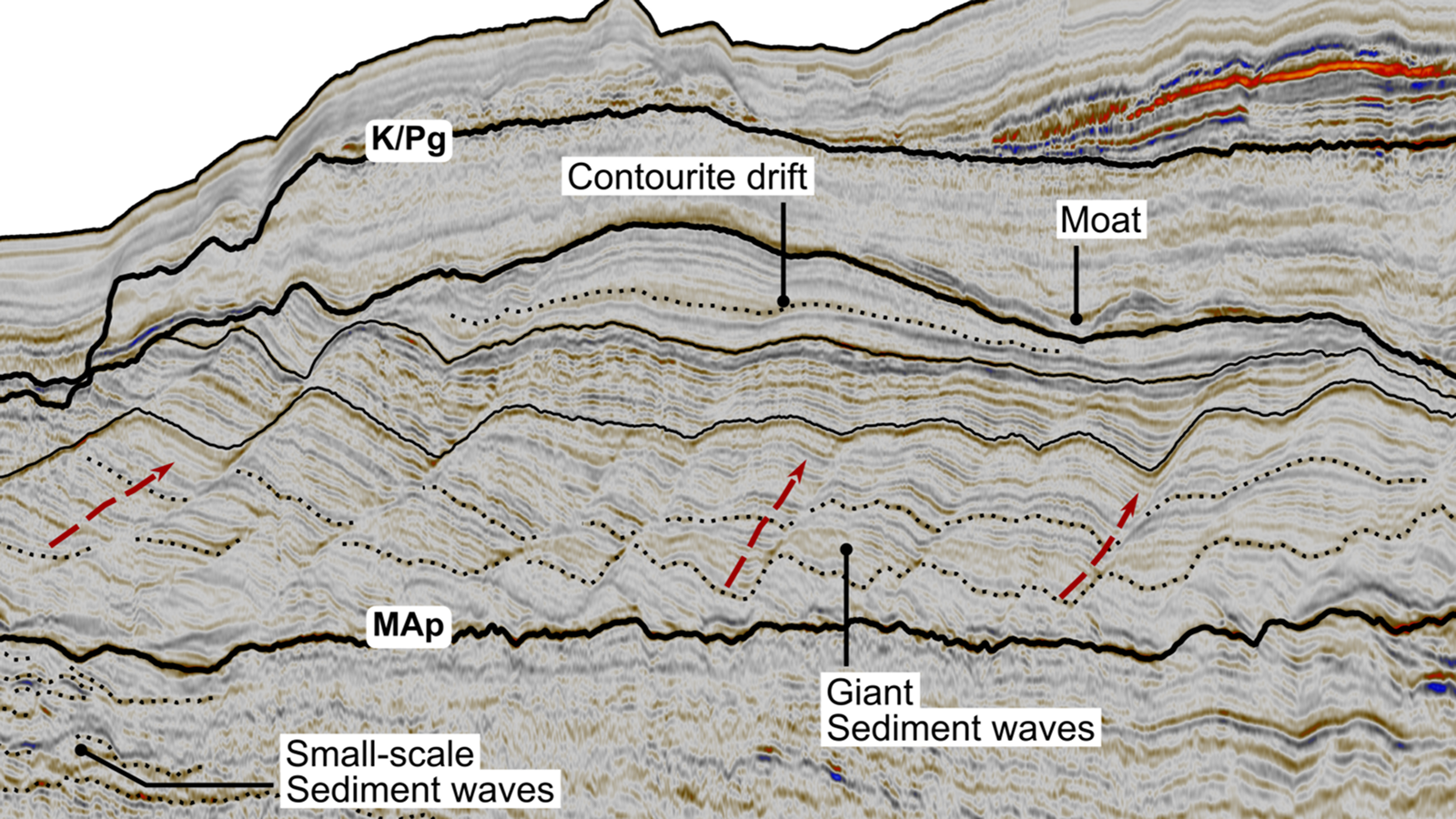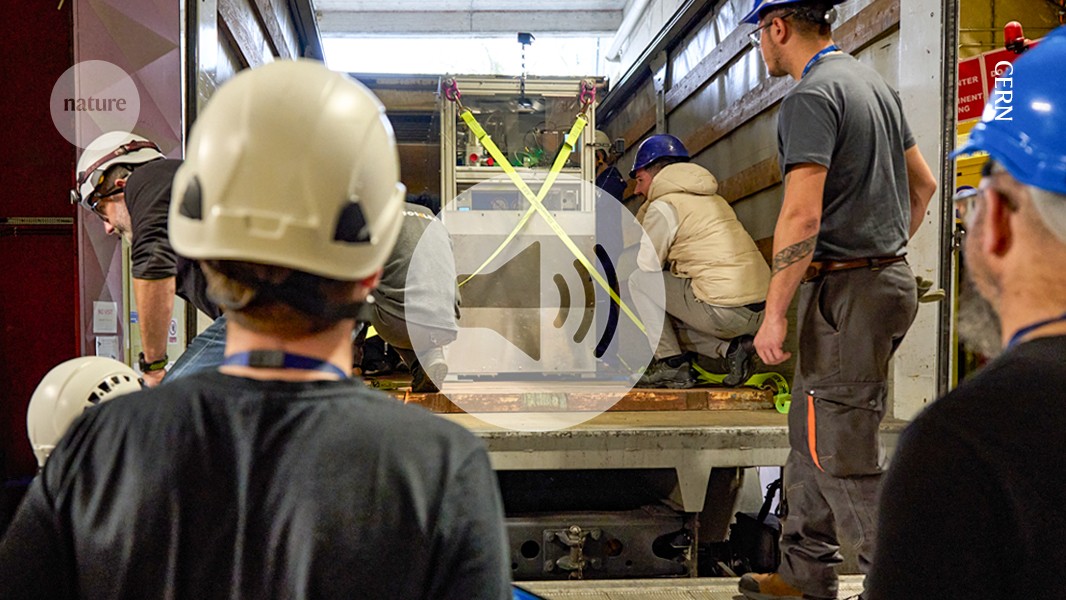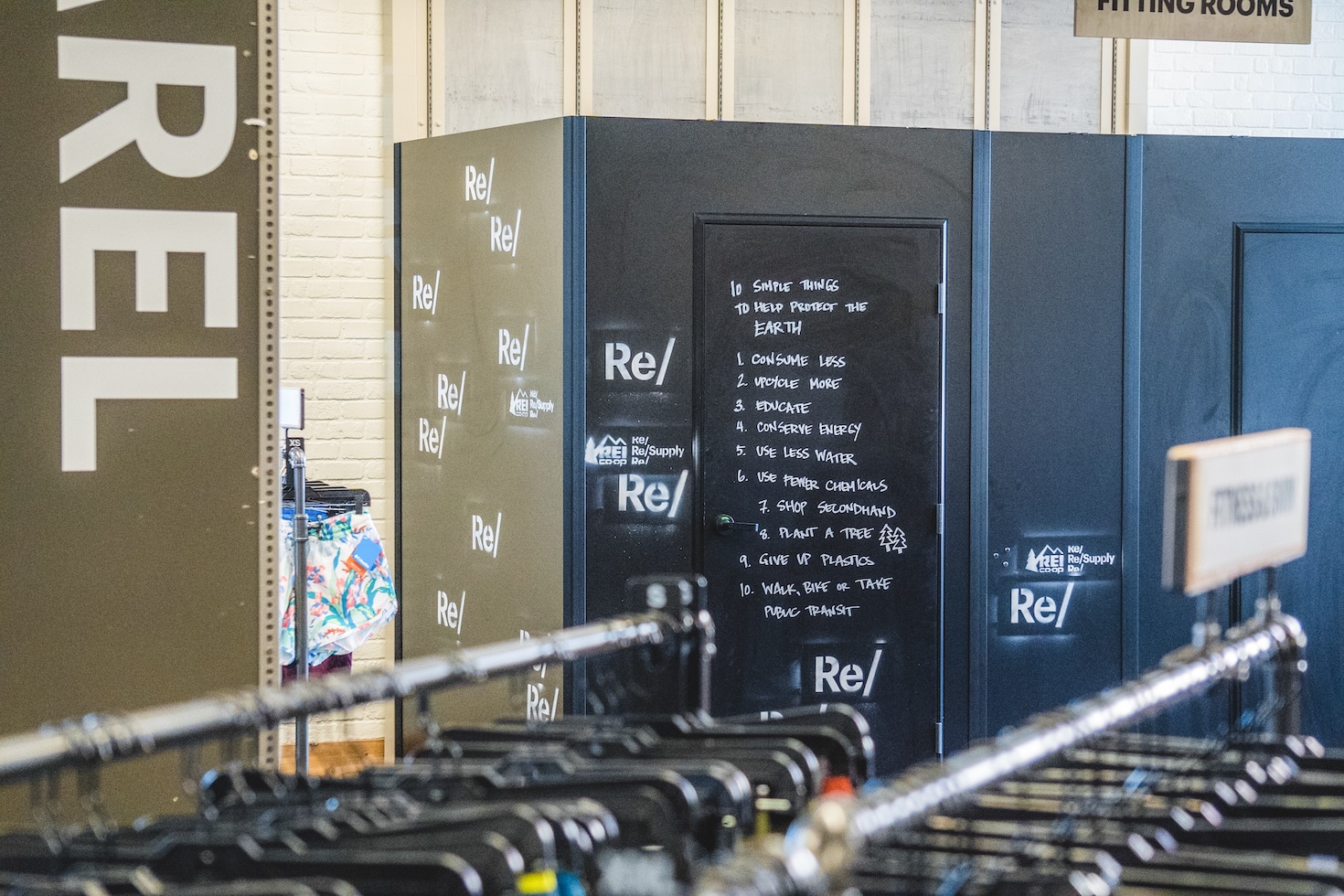Carbon buyers carry on despite political shifts
Companies are shifting away from offsets and carbon neutral claims and toward carbon removal. The post Carbon buyers carry on despite political shifts appeared first on Trellis.

More companies retired carbon credits in the five months since the U.S. presidential election than during the same period a year ago. This indicates that carbon credit buyers are continuing to work toward their long-term climate targets, executing on strategies that stretch beyond any presidential term, according to a report published today by Patch, a carbon credit purchasing platform.
While total active buyers grew, carbon credit retirement volume declined compared to the same five-month period 2023 to 2024. That shift may be due to recent guidance from standards setters, rather than political shifts, according to the report.
“There is no credible path to net zero without carbon removal,” said Brennan Spellacy, Patch CEO, in an interview. As a result, “we’re beginning to see folks … building up their carbon removal inventory or capacity.” That action today will set carbon buyers up to accomplish their climate targets in 2030 and beyond.
“Ramping up [carbon removal purchasing] incrementally is realistic and pragmatic,” said Louis Mark, senior manager of sustainable operations and ESG at Autodesk, which has set a 10-year, science-aligned decarbonization target to reduce its emissions and has been purchasing carbon removal and avoidance credits since 2021.

Source: Patch
Carbon market activity signals broader climate strategy
The voluntary carbon market is a “canary in the coal mine” for corporate climate action, according to the new analysis from Patch. Since credits are transferred digitally, buyers can stop purchasing at any moment, making market demand highly responsive to changes in buyer strategy.
The fact that companies are carrying on with their carbon credit strategies signals that they’re not only committed to their climate targets, but acting on time scales that stretch beyond presidential terms. “Enterprises think in 5 or 10 year operating plans… that’s longer than any administration,” according to Spellacy.
The Patch report isn’t the first to show evidence that carbon market activity is a hallmark of companies investing more broadly in their climate strategies. Material users of carbon credits are more than twice as likely as companies not active in the voluntary carbon market to achieve other signals of credibility in their climate targets, according to a report published last fall by MSCI’s carbon markets research team.
Drivers of the decrease
Several factors are likely driving the dip in credit retirements since the U.S. election.
One factor may be an overall shift away from offsetting and carbon neutral claims, according to the report.
Over the last 18 months, new guidance documents from well-known standard setting bodies, including the Science Based Targets initiative (SBTi), Voluntary Carbon Market Integrity Initiative (VCMI) and The Climate Label, have advised companies to retire carbon credits as contributions to global climate action, but not to make claims about offsetting or neutralizing ongoing greenhouse gas emissions. Companies following these guidelines can focus more on opportunities for impact and less on meeting volume thresholds for their carbon credit purchases, and more focused.
Another explanation of the dip is that companies active in the voluntary carbon market are gradually ramping up their carbon credit purchasing and retirements in preparation to achieve 2030 targets, rather than having to put on muscle all at once in the future.
The data also shows increasing interest in carbon offtake agreements, another sign that companies active in the voluntary carbon market today are thinking about securing credit supply for the future.
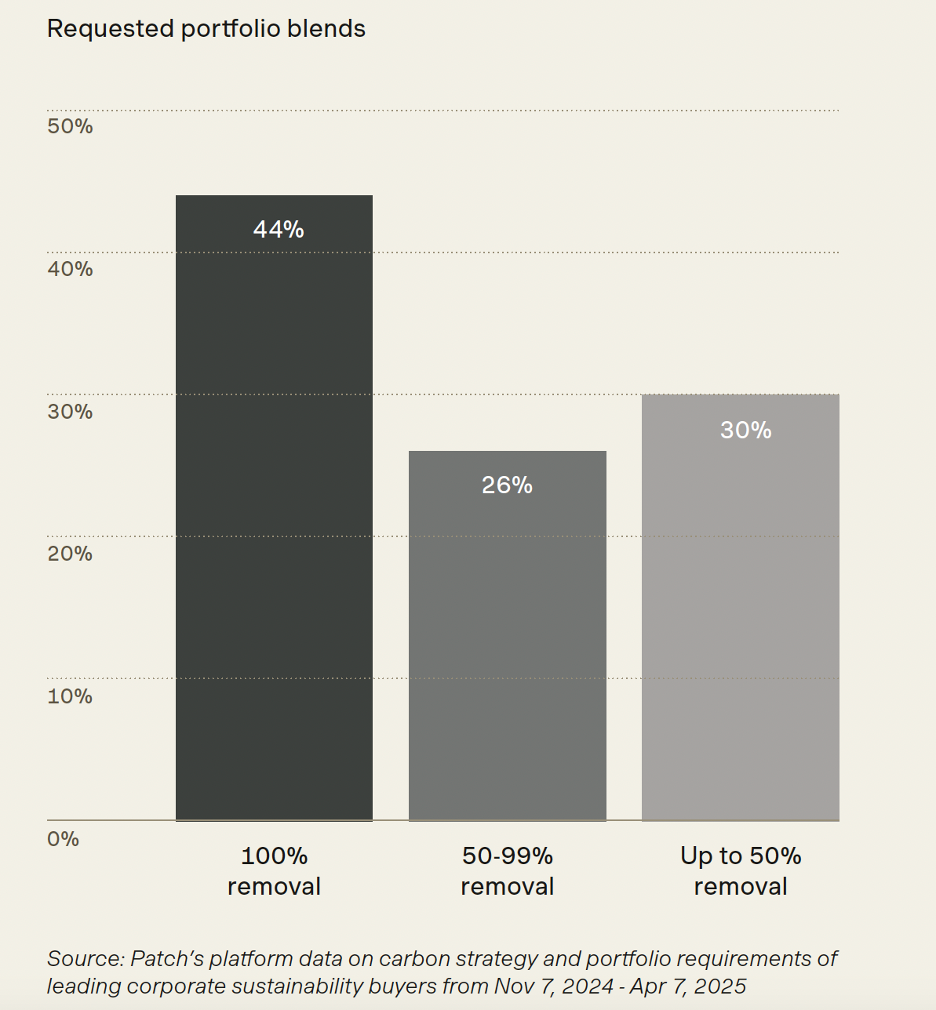
Source: Patch
Buyers are looking for removals
Carbon credits from projects that remove carbon from the atmosphere are very popular. Nearly half of post-election buyer purchase requests that seen by Patch have been for removals-only portfolios. Of the 20 most requested project types during that period, 14 were removals.
Biochar carbon removal has been the most requested carbon project type in Patch portfolios, followed by reforestation, afforestation, and improved forest management — all projects based on nature’s ability to pull carbon out of the atmosphere.
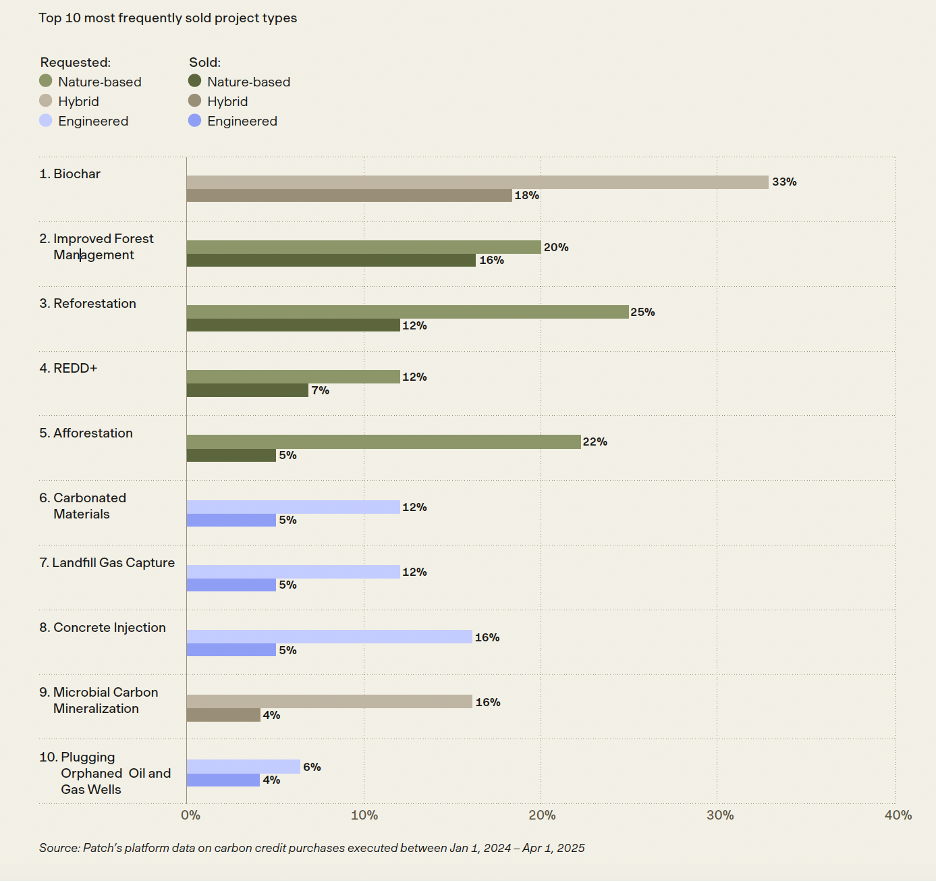
Source: Patch
A hidden supply crunch
Buyers are unable to consistently purchase enough carbon removal credits from the specific project types they’re requesting. Reforestation, for example, is the second most commonly requested carbon project type, with one in four buyers asking for some reforestation credits. Yet it makes up just 12 percent of projects sold. That’s a result of lack of supply that also meets buyer’s ratings and pricing requirements.
Buyers are turning to third party verification
To prioritize project quality, buyers are turning to third party ratings to make the search for quality more straightforward.
Some 80 percent of companies were looking for projects with a BBB+ rating from BeZero, or Tier 2 and above from Sylvera.
Nearly 40 percent of buyers active on the Patch platform in the last five months are also looking for credits from projects using methodologies that have received a Core Carbon Principles label from the Integrity Council for the Voluntary Carbon Market, an independent governance body that has established public standards for quality in carbon project methodologies.
Climate progress over policy chaos
The continued growth in companies funding global climate action via carbon markets is an encouraging sign that corporate climate strategies align more closely with the goal of limiting disastrous warming than with policies from Washington.
“There’s a sense that if there’s someone else is doing it, you can do it too,” said Mark, of Autodesk. “That is a catalyst that should not be forgotten about this decade, and it’s going to be even more essential as we move forward to 2050.”
The post Carbon buyers carry on despite political shifts appeared first on Trellis.












































